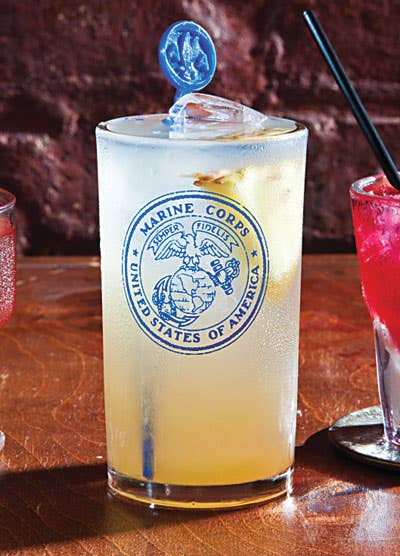
White Lightning
Moonshine’s place in the whiskey landscape is a matter of history and philosophy
All whiskey has to begin somewhere. Whether it spends six years aging in a barrel or sixty, what comes out as a caramel-colored, deeply aromatic wood-tinged spirit goes in as something shockingly different: the crystal-clear, subtly flavored, often harsh single distillation known as moonshine, white dog, new make, or — controversially — white whiskey.
The name "white whiskey" is a relatively new one for the spirit, and one that raises more than a few hackles in the whiskey community. By legal definition a barrel-aged spirit, it would seem counterintuitive to apply the word "whiskey" to something itself defined by its lack of aging. To be able to put the word on a moonshine label, the spirit must either be made from at least 80 percent corn (and be defined as a "corn whiskey"), or it's got to hit the barrel: some distillers of non-corn moonshines take a letter-of-the-law approach, and run their spirit through a 24-hour barrel age — so brief as to impart virtually no change whatsoever to the spirit — and, upon uncasking, have something that is, at least legally, a white whiskey.
But legal definition does not a spirit make. The question of whether moonshine is a whiskey at all raises deep philosophical questions about the very nature of the drink. To Adam Perry Lang, the barbecue guru who not too long ago launched Original Moonshine, the first widely available commercial moonshine, the clear spirit is to whiskey what blanco tequila is to añejo: "It's something to help people take clear spirits more seriously," he explains, while simultaneously providing an origin story of flavor for folks who want to understand where their whiskey began.
Even so, many of the most flavorful moonshines (including Lang's own) are more often than not made from a mash bill of 100 percent corn, a recipe that results in a sweet, sippable clear spirit — and one that's exceedingly rare in the world of finished whiskeys and bourbons. Flavian Desoblin of New York's Brandy Library hypothesizes that this is no accident on either side, speculating that "good moonshines probably make for bad whiskeys," and good whiskeys likely are aged from moonshines that are, in their raw state, less palatable.
Nevertheless, it's possible to craft a flavor story with some of the moonshines that have aged-whiskey counterparts: Buffalo Trace's White Dog is made from a corn-rye-barley mash bill comparable to that of their bourbon, and Tuthilltown Distilleries produces both a lush, sippable clear corn whiskey and a "Baby Bourbon" made from the same totally-corn mash that's then aged a mere three months, and retains much of the same sweet, fresh flavor. For the increasing ranks of young craft distilleries that sell a moonshine while they wait for their whiskeys to age, the story will be even more straightforward.
To truly appreciate moonshines, it's worth stepping away from the is-it-or-isn't-it debate in order to simply assess the spirits on their own merits. Lacking the creamy depth that wood-aging brings to whiskey, moonshines are harsher, cleaner, and less complex, sipping them is akin to sipping vodkas and eaux de vie, spirits to which moonshines are ontologically adjacent. Absent the flavors of the barrel, moonshine puts on display the true flavors of the mash, as well as the terroir of its grain: Koval's single-grain oat white whiskey has the unmistakeable alkaline tang of the midwestern soil in which its oats grew; Death's Door White Whiskey, a mixture of wheat and barley, has a fruity, grassy nose that brings you right to the heart of Wisconsin farmland. Sipped neat or mixed in cocktails, moonshine deserves to stand alone — whether or not you decide to place whiskey next to it.
Keep Reading
Continue to Next Story










